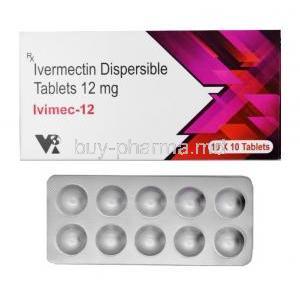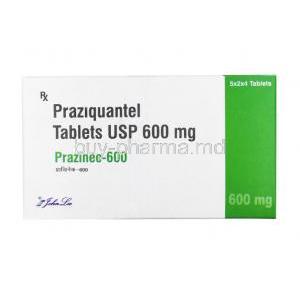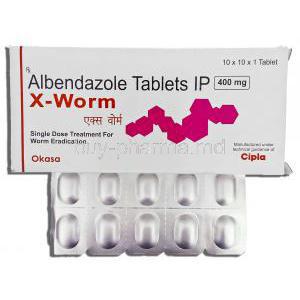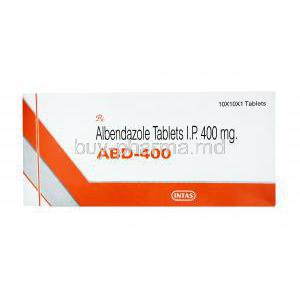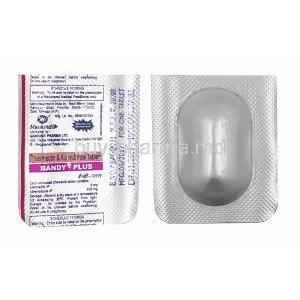Introduction to Frontline Spray
Frontline Spray is a clinically formulated, fast-acting topical treatment designed to eradicate fleas, ticks, and lice in dogs and cats. Engineered with precision, it offers long-lasting protection against these external parasites, ensuring pets remain comfortable and free from infestations.
Parasite prevention is paramount in maintaining the overall health of pets. Fleas and ticks are not merely nuisances; they serve as vectors for serious diseases such as Lyme disease, ehrlichiosis, and flea allergy dermatitis. Effective control measures, like Frontline Spray, are essential to breaking the cycle of infestation and protecting household pets.
Frontline Spray is rigorously tested and holds approvals from the U.S. Food and Drug Administration (FDA) and veterinary authorities worldwide. This endorsement guarantees both safety and efficacy when used according to guidelines.
Composition and Active Ingredients
The core efficacy of Frontline Spray is derived from its active ingredient, fipronil. This potent insecticide is a phenylpyrazole compound that targets the central nervous system of parasites, leading to their rapid paralysis and subsequent death.
- Fipronil: Primary insecticidal agent effective against fleas, ticks, and lice.
- Inactive Ingredients: Stabilizers, dispersing agents, and solvents that ensure proper application and absorption.
- Formulation Benefits: Waterproof and resistant to degradation from bathing or swimming.
The advanced formulation ensures prolonged efficacy, with residual activity that continues eliminating parasites for up to 30 days post-application.
How Frontline Spray Works
Frontline Spray functions by targeting the neuroreceptors of fleas, ticks, and lice. Upon application, fipronil spreads across the pet’s skin via sebaceous gland reservoirs, maintaining continuous protection.
Mechanism of Action:
- Disrupts the chloride ion channels in parasite nerve cells.
- Causes hyperexcitation, paralysis, and eventual death.
- Affects only the targeted parasites, ensuring pet safety.
Duration of Effectiveness:
- Fleas – Eliminated within 24 hours.
- Ticks – Controlled for up to a month.
- Lice – Eradicated within 48 hours.
Regular reapplication is recommended for pets in high-risk environments, such as those with outdoor exposure or multiple pet households.
Approved Uses of Frontline Spray
Veterinary guidelines approve Frontline Spray for use in both canines and felines, providing comprehensive external parasite protection.
- Flea Infestations: Kills adult fleas and prevents re-infestation.
- Tick Control: Protects against Ixodes scapularis (black-legged tick), known for transmitting Lyme disease.
- Lice Treatment: Eliminates chewing lice, preventing further skin irritation.
Off-Label Uses of Frontline Spray
Beyond its primary indications, veterinarians and pet owners have explored alternative applications for Frontline Spray in various animals.
- Small Mammals: Used in ferrets, rabbits, and guinea pigs for flea and mite prevention.
- Farm Animals: Applied in controlled doses to horses, sheep, and goats for tick management.
- Veterinary Settings: Used as a supplementary measure in shelters and rescue centers for parasite outbreaks.
While these off-label uses have shown efficacy, professional consultation is strongly advised before application.
Dosage and Administration
Proper application is essential to ensure optimal efficacy. Dosage recommendations vary based on the pet’s size and weight.
General Guidelines:
- 1-2 pumps per pound of body weight.
- Evenly distribute spray across the pet’s body, avoiding eyes and mouth.
- Massage into the coat for enhanced absorption.
Frequency of Application:
- Indoor pets – Once every 30 days.
- Outdoor or high-risk pets – Every 3-4 weeks.
- Post-bathing – Reapply as necessary to maintain efficacy.
Pets with thick or double coats may require additional sprays to ensure full penetration to the skin.
Common Side Effects of Frontline Spray
While Frontline Spray is generally well tolerated, some pets may exhibit mild, temporary reactions post-application.
- Skin Irritation: Mild redness or inflammation at the application site.
- Increased Scratching: Temporary itchiness as the product takes effect.
- Hair Loss: Localized shedding in sensitive pets.
Adverse reactions typically subside within a few hours. If symptoms persist or worsen, veterinary advice should be sought immediately.
Potential Serious Side Effects and Risks
While Frontline Spray is generally well tolerated, certain pets may experience adverse reactions. Recognizing early warning signs is crucial for mitigating risks.
Allergic Reactions:
- Swelling of the face, lips, or eyelids
- Intense itching or hives
- Labored breathing or wheezing
Neurological Symptoms:
- Uncontrollable tremors or muscle spasms
- Seizures or sudden loss of coordination
- Unusual lethargy or confusion
Digestive Issues:
- Excessive drooling, nausea, or vomiting
- Diarrhea or lack of appetite
- Gastrointestinal distress if ingested
Excessive or repeated use beyond the recommended dosage may increase toxicity risks, potentially leading to chronic neurological impairment or liver stress in susceptible pets.
Contraindications and Warnings
Frontline Spray is not suitable for all animals. Specific contraindications must be observed to ensure pet safety.
Pets That Should Not Be Treated:
- Animals under eight weeks of age
- Pets weighing less than two pounds
- Species not approved for use, such as reptiles or birds
Health-Related Restrictions:
- Pets with a history of severe allergic reactions to fipronil
- Debilitated or immunocompromised animals
- Pregnant or lactating females (use only under veterinary guidance)
Strict adherence to guidelines ensures reduced risks and optimal efficacy.
Important Precautions for Safe Use
Proper application techniques and environmental considerations are essential to ensure safety.
Avoid Direct Contact With:
- Pet’s eyes, mouth, or mucous membranes
- Open wounds or irritated skin
Application Environment:
- Use in well-ventilated areas
- Avoid spraying near food, water bowls, or bedding
Prevent Licking or Grooming:
- Allow the product to dry completely before pet interaction
- Monitor multi-pet households to prevent cross-contamination
Safety precautions minimize unintended exposure and enhance product efficacy.
Administration in Special Populations
Administration to Elderly Pets
Senior pets may require modifications in dosage and application frequency.
Considerations for Older Animals:
- Reduced metabolism may prolong drug retention
- Monitor for increased skin sensitivity or adverse effects
- Consult a veterinarian for dose adjustments based on overall health
Administration to Pregnant and Nursing Pets
While Frontline Spray is commonly used in breeding animals, precautions must be taken.
Key Considerations:
- Limited data on effects during gestation
- Potential for exposure to nursing offspring
- Alternative parasite control may be recommended for expectant or lactating mothers
Administration to Puppies and Kittens
Young animals have a heightened sensitivity to insecticides and require specific guidelines for safe application.
Usage Guidelines:
- Minimum age requirement: eight weeks
- Weight-based adjustments for small breeds
- Monitor closely for adverse reactions such as excessive salivation or lethargy
Drug and Chemical Interactions
Interactions with other medications or treatments may impact Frontline Spray’s effectiveness or increase toxicity risks.
Potential Interactions:
- Concurrent use with other topical flea and tick treatments
- Prescription medications affecting liver metabolism
- Use with flea shampoos, powders, or dips
Veterinary guidance is essential when combining treatments.
Overdosage and Toxicity Risks
Accidental overuse can lead to systemic toxicity, requiring immediate intervention.
Signs of Overdose:
- Excessive drooling or frothing at the mouth
- Uncontrolled muscle tremors or convulsions
- Profound lethargy or collapse
Emergency Measures:
- Immediate bathing with mild soap to remove excess product
- Veterinary consultation for symptomatic treatment
- Intravenous fluids or medications to counteract toxicity
Safe handling and correct dosing prevent adverse effects.
Proper Storage and Handling Precautions
Maintaining Frontline Spray under optimal conditions ensures its efficacy and longevity.
Storage Recommendations:
- Store in a cool, dry place away from direct sunlight
- Keep container tightly sealed when not in use
Safety Precautions:
- Keep out of reach of children and pets
- Avoid contamination of food or water sources
Disposal Guidelines:
- Dispose of empty containers following local hazardous waste regulations
- Do not pour excess product down drains or waterways
Proper storage and disposal practices contribute to environmental safety and product efficacy.
Frontline Spray FAQ
- Is Frontline Spot On effective?
- How long does Frontline Spot On last?
- What is Frontline Plus spot-on?
- What are the side effects of Frontline Spot On?
- Is Frontline 100% effective?
- What if I still see fleas after Frontline?
- Is Nexgard better than Frontline?
- Is Frontline spot on safe?
- Can I bathe my dog after Frontline?
- What are the side effects of spot on for dogs?
- Can I give Frontline twice in a month?
- What happens if I give my dog too much frontline?
- What happens if my dog licks the frontline?
- Why is my dog itchy after Frontline?
- Do vets recommend Frontline Plus?
- How do I know if Frontline Plus is working?
- Can I reapply Frontline after 2 weeks?
- How long until Frontline kills fleas?
- Can I comb my dog after flea treatment?
- Can I touch my dog after spot-on treatment?
- Does Frontline make dogs sleepy?
- Why is Frontline not working?
- Why is my dog still scratching after Frontline?
- Can I give NexGard and Frontline together?
- Can I give Frontline twice in a month?
- Why does my dog still have fleas after using Frontline?
- Is Frontline poisonous to humans?
- Is Frontline safe for your dog?
Is Frontline Spot On effective?
It typically works for 5 weeks in cats and up to 8 weeks in dogs.
How long does Frontline Spot On last?
Frontline Spot On is efficient in getting rid of fleas and ticks in cats by controlling biting lice. Fleas are eliminated within a day. Ticks within two days—and providing lasting outcomes with flees being eradicated for as long as five weeks and ticks for up to a month.
What is Frontline Plus spot-on?
This remedy includes two ingredients, Fipronil and (S) methoprene, which collaborate in disrupting the flea life cycle by getting rid of adult fleas as well as their eggs and larvae while also averting infestations.
What are the side effects of Frontline Spot On?
The place where the product is used might cause itching or irritation. It could appear red.
Is Frontline 100% effective?
According to research, Frontline Plus is highly reliable in getting rid of fleas and ticks at every stage of their life within 12 to 24 hours after treatment.
What if I still see fleas after Frontline?
If you still find a lot of fleas lingering after starting the treatment process for a days, it might suggest there is an infestation somewhere in your house.
Is Nexgard better than Frontline?
When dealing with tick infestations, management concerns arise; Nexgard provides a solution to address this issue effectively and efficiently.
Is Frontline spot on safe?
Yes
Can I bathe my dog after Frontline?
Don't bathe your dog for 48 hours
What are the side effects of spot on for dogs?
Make sure to watch how your pet reacts after using the product for the time, and keep an eye out for any changes in their well-being or behavior afterward. If your pet seems unwell after using the product or exhibits signs of sickness like lack of appetite or unusual behavior such, as vomiting or excessive drooling be sure to contact your veterinarian to seek advice and assistance.
Can I give Frontline twice in a month?
Make sure your beloved pet remains flea and tick-free by applying a dose of Frontline. For dogs, using the pipette consistently throughout the year keeps them safe and healthy.
What happens if I give my dog too much frontline?
Manufacturers argue that dogs can handle up to five times the suggested dosage with no effects.
What happens if my dog licks the frontline?
If your furry friend begins to lick the product shortly after you administer it, they might drool for a moment due to the taste sensation they experience. It's probably just a temporary reaction that will fade away without any long term concerns to fret over.
Why is my dog itchy after Frontline?
When your pet's flea treatment begins to take effect and work its magic, you might notice an increase in flea activity, which can cause your furry friend to scratch often.
Do vets recommend Frontline Plus?
Yes
How do I know if Frontline Plus is working?
It gets rid of fleas by triggering a reaction in their bodies, which makes the fleas' nerves more active before they eventually die on the animal's fur coat surface.
Can I reapply Frontline after 2 weeks?
If the flea treatment you applied doesn't work as expected within two weeks you can. Apply it again earlier than planned or switch to a brand.
How long until Frontline kills fleas?
It quickly eliminates fleas by getting rid of them within 24 to 48 hours of application to offer relief from itching and discomfort. It prevents infestations by stopping flea eggs from hatching and larvae from developing, interrupting the flea breeding cycle for long-lasting protection.
Can I comb my dog after flea treatment?
You could carefully comb through your puppy's fur to remove the fleas. Its not really required as they usually drop off on their own within a days anyway.
Can I touch my dog after spot-on treatment?
We recommend allowing a day for it to settle into the system without any disturbances.
Does Frontline make dogs sleepy?
Frontline doesn't tend to cause lethargy
Why is Frontline not working?
The main issue with flea prevention not working as expected is usually related to how it's applied.
Why is my dog still scratching after Frontline?
Your pet should settle down in a day or two. If your pet continues to scratch for more than a day, it could be a sign of underlying problems, such as a flea allergy, a skin infection, hormonal imbalances, or other reasons that may be causing discomfort.
Can I give NexGard and Frontline together?
It is safe and effective to give dogs Frontline TriAct and Nexgard Spectra for six months to control parasite infestations.
Can I give Frontline twice in a month?
Remember to use a dose of Frontline for Dogs every month as instructed (the package includes a pipette tool).
Why does my dog still have fleas after using Frontline?
After treating for fleas, spotting them afterward isn't about how the flea treatment works or when the fleas die off but also about the development of new fleas from various life stages in the pet's environment that then jump onto the pet.
Is Frontline poisonous to humans?
Yes
Is Frontline safe for your dog?
Frontline is generally considered safe to use on dog breeds.















